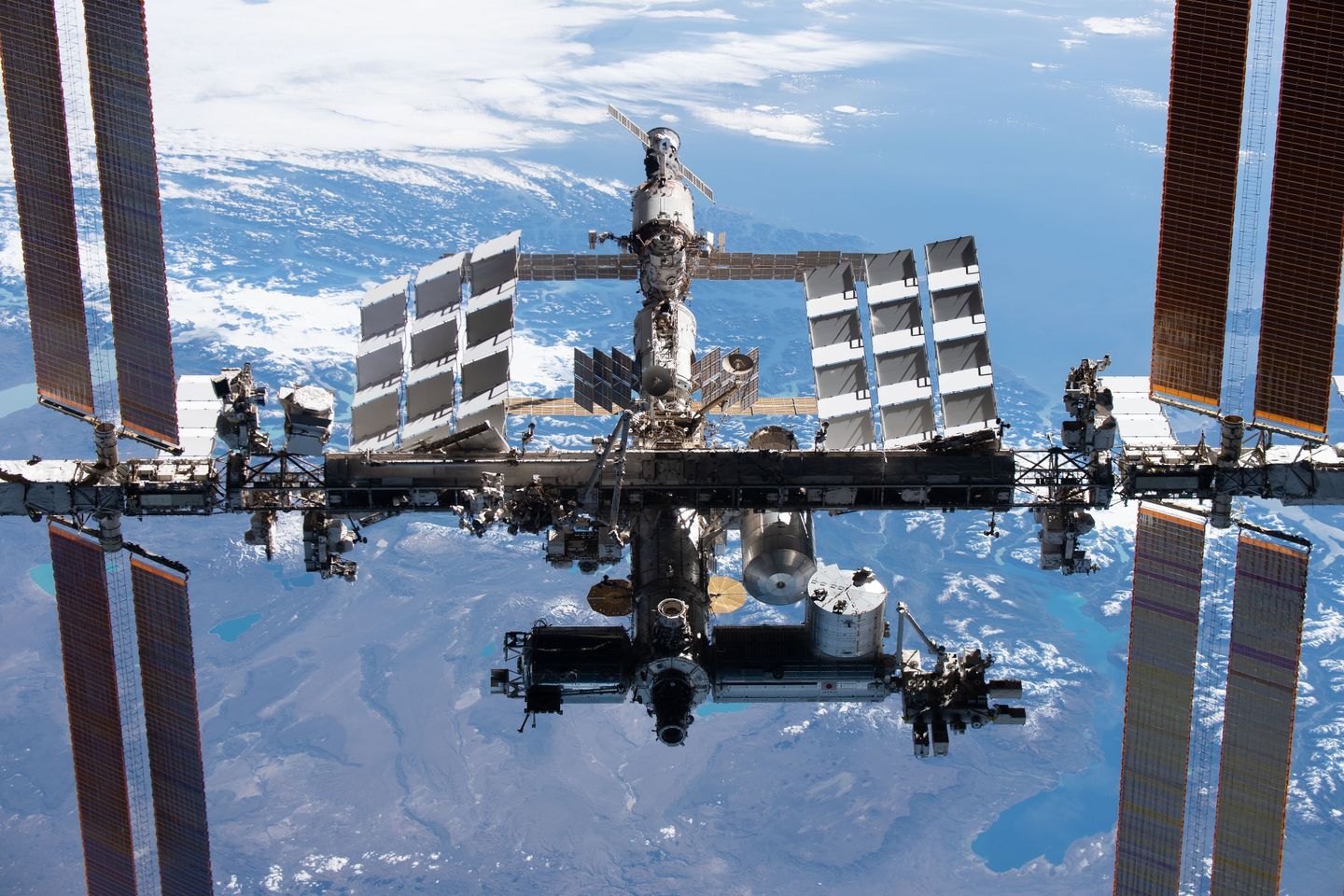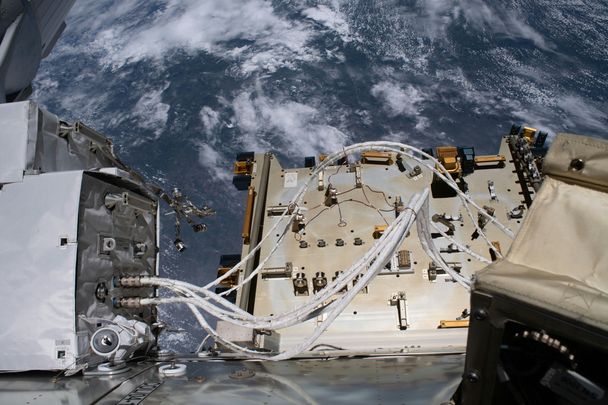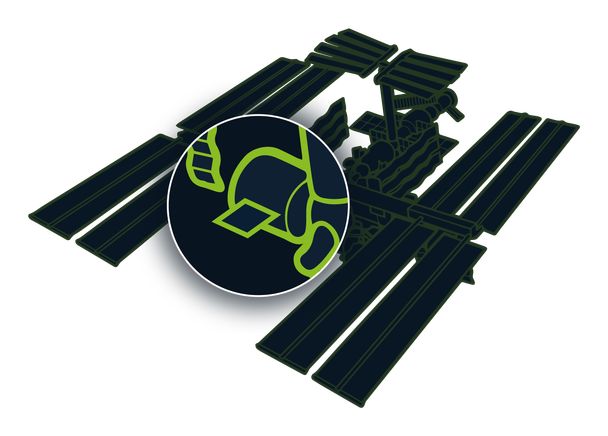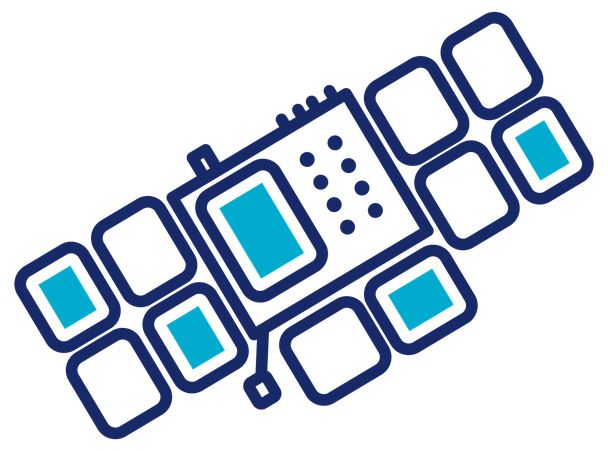31.07.2023

When it comes to making access to Space easier and more affordable, why not resort to an established infrastructure that already exists?’ This is one of the questions Airbus engineers asked themselves when they started looking at how they could make the many benefits of Space-based activities accessible to a wider community.
Turns out: The International Space Station (ISS) - one of (if not the) most reliable assets humanity has in Space today - offers just that. “When we first started thinking about Bartolomeo, we soon saw that while payload space on the ISS was available and well-used especially for agency-backed research, we were not exploiting the station’s full potential,” says Christian Steimle, now Head of the Bartolomeo Programme at Airbus Space. “So we started looking at how we could establish both additional infrastructure and a commercial service, which would enable more flexibility, a faster time-to-orbit, greater affordability and simpler processes.”

The result: The Bartolomeo platform and the related All-in-One Space Mission Service. This external payload hosting facility, named after the younger brother of Christopher Columbus, was built by Airbus in Bremen and installed on the outside of the ISS’ European Columbus Module at the very front of the space station. ESA astronaut Matthias Maurer completed its installation by establishing a final cable connection in March 2022 and the platform is ‘open for business’.
The team has since added the ArgUS Multi-Payload Carrier to the portfolio, a payload accommodation plate built by the Airbus team in Houston and ready to host up to 10 smaller payloads within one standard payload slot.
Read more about the Bartolomeo service and technical specifications here…
#NextSpace at Its Best
Without even knowing it at the time, the team developed what we could call one of Airbus Space’s very early #NextSpace topics – which goes to show that what we call #NextSpace is not just a theoretical concept, but reflects real developments in the Space domain. And in a way shows that the much-evoked division between ‘New Space’ and ‘Old Space’ is artificial.
Read more about #NextSpace here…
“Bartolomeo is for everyone,” says Steimle. New entrants and established players from around the globe appreciate that on Bartolomeo, flying a LEO mission becomes comparatively easy and affordable, and this is reflected by the customer base: “We are looking at a quite healthy mix of customers,” he says. “Of course, Space Agencies welcome the opportunity of this additional payload space, but we have also signed up commercial customers and research organizations – and some capacity remains.”
First Payload Launches in 2023
With first payloads being launched and installed on the Bartolomeo platform in the course of 2023, what was once no more than a vision of a small group of engineers from Bremen, Germany, is now becoming a firm reality.

Some Examples of Payloads Slated to Fly on Bartolomeo
- The very first payload on the Bartolomeo platform is the Multi-Needle Langmuir Probe (m-NLP), currently the only instrument in the world capable of resolving ionospheric plasma density variations at spatial scales below one metre. This probe, coming from the University of Oslo and Eidsvoll Electronics (Norway) and supported by the European Space Agency (ESA), benefits from the relatively low orbit of the ISS, which puts it near the peak plasma density of the ionosphere. The m-NLP payload will occupy a standard slot for more than three years.
- The European Space Agency’s (ESA) Exobiology Platform mission consists of a set of radiation experiments aimed at better understanding the evolution of organic molecules and organisms in space and will occupy a standard slot for 36 months.
- The German Aerospace Center (DLR) has booked a double slot for its 18-month COMPASSO mission. It is the first in-orbit verification of compact and highly stable laser-optical clocks with a bi-directional optical link to compare and synchronize with highly stable clocks on Earth.
- US communications service provider OnOffBlock Inc DBA Xenesis relies on an ArgUS slot for the year-long in-orbit demonstration of its Xen-Hub, an optical communications terminal capable of establishing high-speed links greater than a gigabit per second.
- Space innovator Launchspace, Inc has booked a slot on the ArgUS for an orbital debris collection and spacecraft shielding demonstration using orbital ‘Debris Impact Pads’, which house a series of sensors that record impact, force and orbital location of debris.
- As part of UNOOSA’s ‘Access to Space 4 All’ initiative, Airbus is providing an ArgUS slot on its 2024 sortie for the ClimCam, a remote sensing camera system dedicated to Climate Change monitoring East Africa. This free-of-charge slot is occupied by the EKU Consortium comprising the Space Agencies of Egypt, Kenya and Uganda.
The first ArgUS Mission, carrying several payloads within one standard slot, is slated for late 2023 and will carry payloads from Germany, Spain, the United Kingdom and the USA.
For more complex Space missions, customers can draw on Airbus’ decades-long experience and contract design and engineering services to ensure their mission success. “We are currently discussing a number of additional payloads,” says Steimle. “Some are more or less good to go, while for others, our experts are working very closely with the customer to assess feasibility and define how we can best support them en route to orbit.”

New additional payloads include technology demonstrations, in-orbit verification missions, in-space manufacturing and 3D printing approaches, to name but a few. “That is what makes work on the Bartolomeo service so exciting for us,” Steimle says: “We are able to cover a wide array of missions in a relatively small space, and each and every one of them is exciting. It is a great opportunity for us at Airbus Space to apply our decades of experience and help our customers make their mission a reality.”
A Commercial Service for Today and Tomorrow
And what does the future hold for Bartolomeo? “The ISS will continue to operate for a number of years yet,” says Steimle, “and as will Bartolomeo. But we are already working with potential partners for the time beyond: There are a number of organizations and private companies working on the next generation of LEO stations, many with a much more service-based approach than today’s station. Airbus is strongly engaged in such initiatives, and we are convinced that a Bartolomeo-like service will continue to exist, and even continue to grow.”
Quelle: Airbus
